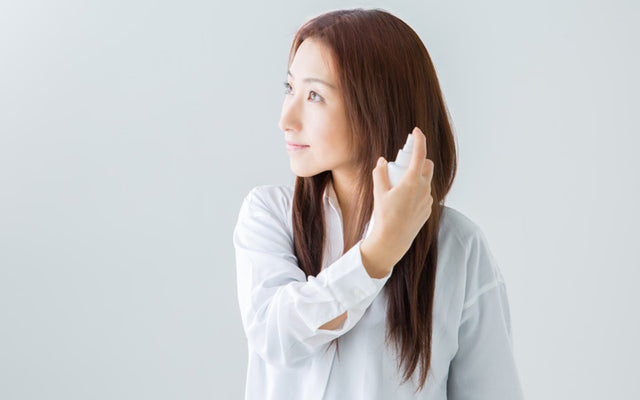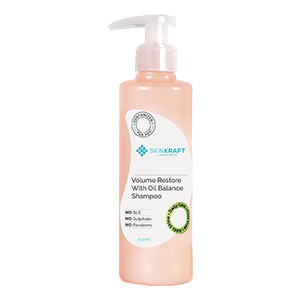Flaunting the same hairstyle all through the week can get so drab, right? We can relate with you. The need for hairstyling, be it straightening, curling or blow drying, is no longer limited to just parties or weddings. You want to sport a new look at work as well, every other day.
But, when you are heading out to work in a hurry, do you often skip the most important step of heat styling your hair? The heat protectant spray! Why is it so important and how should you use it? Find out below.
Highlights:
- What Is A Heat Protectant Spray?
- How Does Heat Protectant Spray Work?
- Heat Protectant - How To Use & When To Use?
- Does Your Hair Really Need A Heat Protectant Spray?
- What Happens If You Don't Use Heat Protectant?
- How Do I Find The Best Heat Protectant For My Hair?
- How Much Heat Protection Spray Should You Use?
- How Often Should You Use Heat Protection Spray?
- Do You Put Heat Protectant On Wet Or Dry Hair?
What Is A Heat Protectant Spray?
A heat protectant spray minimizes hair damage caused due to the heat emitted by styling equipment like curlers, straighteners and blow-dryers. It is usually a leave-in product that is applied to your hair before you start styling it.
How Does Heat Protectant Spray Work?
Heat protectant spray adds a protective layer to your hair, which helps keep it safe from the heat produced by styling tools. The sprays seal in moisture in your hair and smoothens the cuticle (outer layer) of your hair.
Heat Protectant - How To Use & When To Use?
You can use a heat protectant spray on dry or damp hair before you start styling your hair. Spray only on your hair, avoiding the scalp. You can comb your hair after application to make sure the product spreads evenly across the hair.
Does Your Hair Really Need A Heat Protectant Spray?
Bear in mind that heat protectant sprays do not prevent hair damage from heat styling tools. They can only minimize the damage. If you notice dry, brittle, frizzy and split-end prone hair, your hair may be damaged and needs the right care.
Hair masks, deep conditioning treatments, repairing shampoos and trimming hair can help damaged hair.
Pro Tip:
Always keep the heat of your styling tool under 350 degrees to minimize hair damage.
What Happens If You Don't Use Heat Protectant?
When you are styling, your hair comes in direct contact with heat from a styling tool. Without protectant spray, the heat strips off the natural or artificial color pigments in your hair. It breaks down the keratin protein that gives your hair its strength and elasticity. This causes your hair cuticle to open up and cause frizz.
How Do I Find The Best Heat Protectant For My Hair?
1. Consider Your Hair Type
A lot of heat protectant sprays available in the market are customized based on hair types. Find out your hair type by taking the SkinKraft hair quiz.
2. Consider The Texture
You may want to invest in a light-weight non-greasy formula that does not leave a residue on your strands. If you have colored hair, look for sprays that read ‘safe on colored hair’.
3. Consider Sulfate Free And Paraben Free Formulas
Since the product is a leave-on one, you don’t want to risk your scalp and hair with these irritants.
Some heat protectant sprays contain silicones (like dimethicone and cyclomethicone) while others have water-based polymers (like polyquaternium and acrylate copolymer). You can look for the following ingredients while purchasing a heat-protectant spray:
A. Humectants Like Panthenol And Propylene Glycol
These are the ingredients that attract moisture from the air and lock it in your hair.
B. Amino Acids Like Keratin
They help to strengthen hair. Keratin is a structural protein that makes up your hair.
C. Natural Oils And Extracts Like Aloe Vera
They protect and seal the hair’s cuticle.
Note:
You may want to avoid or limit the use of heat protectant sprays on your hair if you have extremely thin hair, as these sprays weigh down your hair further. In fact, you should be avoiding heat styling and can try rollers for styling.
How Much Heat Protection Spray Should You Use?
Spritz once on every section of your hair. Make sure you hold the spray bottle 15 cm away from your hair. If your hair is thicker, you may want to re-spritz. If you have thin hair, avoid applying too much of the spray. While a heat protectant spray is your thermal defence, too much of the accumulated product is not good for your hair.
How Often Should You Use Heat Protection Spray?
As a general rule of thumb, you should use a heat protectant spray everytime you style your hair with heat styling tools. The best idea is to minimize the number of times you style your hair to reduce the damage.
Do You Put Heat Protectant On Wet Or Dry Hair?
You can spritz a hair protectant spray onto either damp hair or dry hair. Some sprays work best for both damp and dry hair. You may want to read the label and instructions before you buy one. There are also formulas that require you to apply and rinse off in the shower.
Wrapping Up
Heat protect sprays are a blend of humectants, proteins and botanical extracts that help in sealing the moisture in your hair. However, they are not insulators on your hair. They can only minimise the hair's exposure to direct heat. While we can encourage you to style your hair after using a protectant spray, limit the number of times you style to avoid hair damage.
Recommended Products
Was this Article helpful?
- Least helpful
- Most helpful











